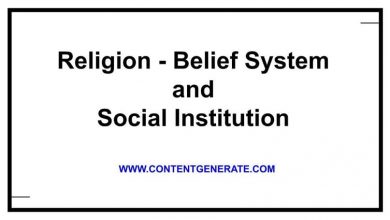Guidelines to Write Constructed Response Questions (CRQs)

This article defines and explains what are essay questions, i.e. constructed response questions (CRQs) and extended response questions (ERQs). It also explains the step-by-step guidelines for writing effective essay questions.
Contents
What are essay questions?
Essay questions are questions in an exam test that demand examinees to construct their responses in sentences, or paragraphs. The answer required can be a short and long composition.
Essay questions are also called open-ended questions or open response questions as students can correctly respond in a multitude of ways. Unlike multiple-choice questions (MCQs), essay questions require students to construct or develop their responses in absence of any given suggestions or choices.
What are the types of essay questions?
There are two main types of open-ended questions called Constructed Response Questions (CRQs), and Extended Response Questions (EQs).
The essay questions are further divided into:
1. Constructed Response Questions
3. Extended Response Question.
The following is an explanation of each of these questions:
1. Constructed Response Questions (CRQs)
The CRQs are questions that require learners to apply their knowledge, comprehension, and high order thinking skills in real-world situations. The evaluation of the student responses in CRQs is always standard-driven.
Constructed Response Items:
1. demands the test takers to construct rather than choose the response from a given choice;
2. prompts test-takers to respond in sentences and paragraphs;
3. elicit more than one perspective on a given topic thereby allowing expression of differences of opinion across respondents;
4. requires the development of marking criteria approved after it has been reviewed by a group of assessment experts to mark the responses.
Types of Constructed Response Questions (CRQs)
The CRQs are further classified into two types i.e. short-answer questions and short-essay questions.
A. Short-Answer Questions
Short-Answer Questions require a student to construct his/her response in one word, phrase, or sentence.
Example of short-answer question
Below are two examples of short-answer questions in which the respondent is required to write a short answer of one word, a phrase, or a sentence.
The capital of Punjab province of Pakistan is ________________
What is the name of the capital city of the province of Sindh in Pakistan?
B. Short-Essay Question
Short-essay questions require an examinee to construct his/her response in more than one sentence. The response may also have consisted of one or two paragraphs.
The following is an example of a short essay question:
STEM: Aurangzeb keeps the fast on Fridays and during the period of Ramazan. He does not eat forbidden meats and does not listen to music. In his court, no wicket talk, no backbiting or lying is allowed. (An extract from ‘The History of Aurangzeb’ authored by an official in his court in 1668. )
What does the given extract make you think about Aurangzeb in comparison with his forefathers? [Marks 3]
2. Extended Response Questions (EQs)
The ERQs are questions that require students to construct their responses to reach some conclusion on a given topic by applying higher cognitive skills. For instance, by applying relevant knowledge and understanding they possess.
Response to EQs consumes quite a good amount of time and thought. A student is expected to come up with his/her original thought and support his/her claims and statements with rationale, evidence, logic, and reasons. In other words, in EQs students are expected to apply knowledge and understanding in a new situation.
Example of EQs
Aurangzeb’s religious policies acted as the main reasons for Maratha and Sikh rise against Mughal Empire.
How far do you agree with this statement? Explain your answer. Marks 14
The above is an example of an extended response question that requires a student to make his/her own judgment and justify with the use of the relevant knowledge and understanding about the fall of the Mughal empire.
What are the components of essay questions?
A good CRQ or ERQ consists of the following components:
1. Stem/Case
This is any context, scenario, problem, data, diagram, etc. provided in the beginning of the question.
Features of a good stem
The following are features of a good stem:
Clarity and conciseness
A good stem is always brief and comprehensive.
Direct question without distractions
It is a statement or a direct question. It does not carry any unnecessary or distracting information that may confuse an examinee.
Indication of specific expectation
Another feature of a good stem is that it indicates the expectation (numbers, steps, etc.) and;
Focus on a single concept
A good stem focuses on a single feature or concept on which a student’s learning is assessed.
The use of simple and easy language
A good stem avoids the use of difficult language and irrelevant information. Similarly, the use of uncommon words and terminologies, and abbreviations make a question ineffective as it may distract a student from the main task.
A particular form
A good stem contains a particular form. It may contain a situation, a case, article, data, picture, maps, news, general information, speeches, graphs, diagrams, reading passage, etc.
2. Task/Lead-in
A lead-in is a question or the task given to the examinee to perform.
Characteristics of a good task or lead-in
The following are features of a good Task/ Lead-in.
Provision of model answer
A good task or lead in provides the model answer against which the examiner assesses the student’s response.
Alignment with SLO and stem
A good lead-in is in alignment with the student learning outcome and the stem.
Predictable responses
A good lead-in includes all predictable/possible answers that students may provide.
Essential aspects of the answer
A good lead-in or task highlights and mark essential aspects of the expected response.
3. Possible answers/ Response Key
A good CRQ or ERQ provides a model answer which is in alignment with the learning objective, situation and question asked. It includes all predictable/acceptable responses and highlights or marks essential aspects of the answer




